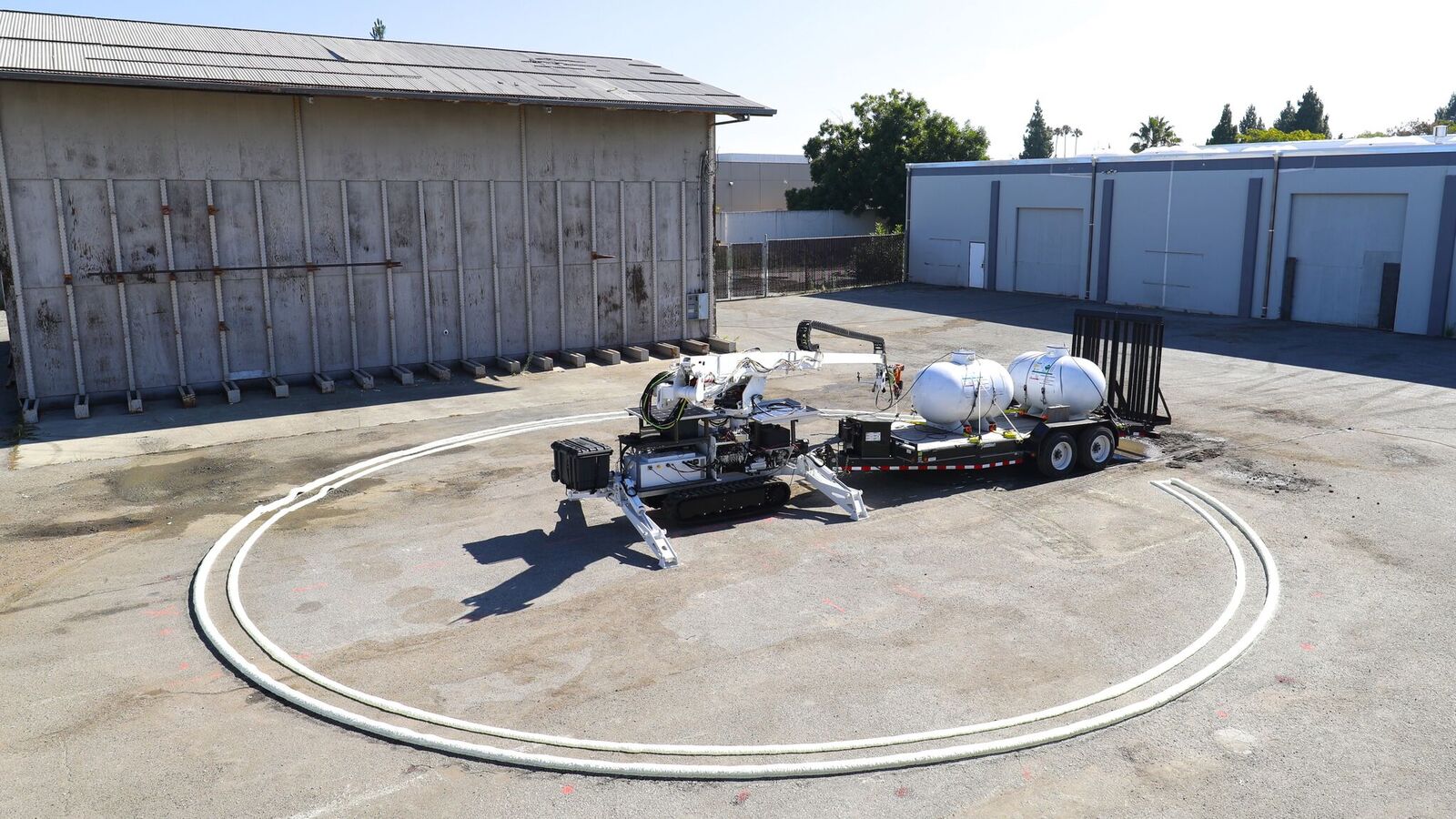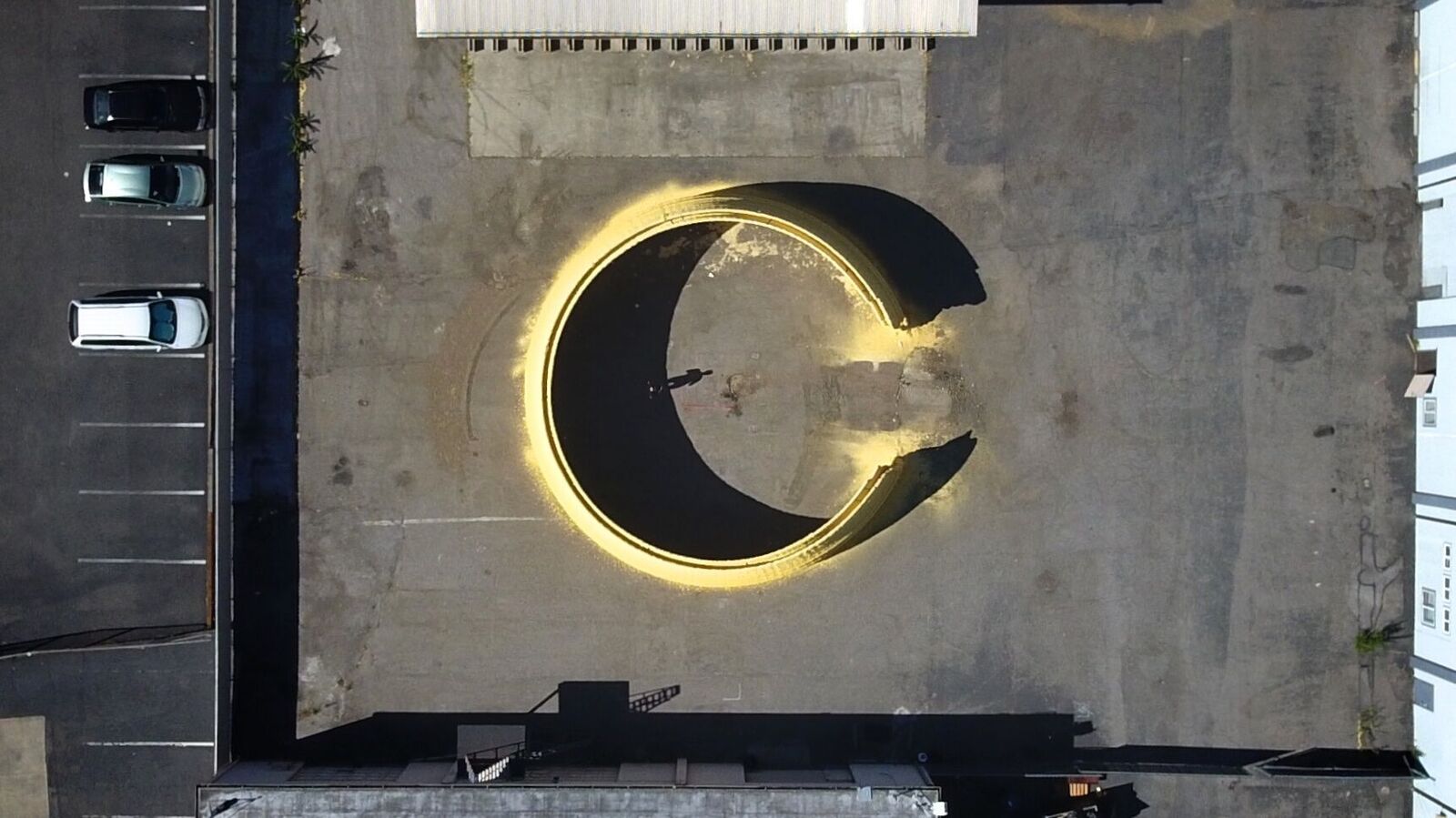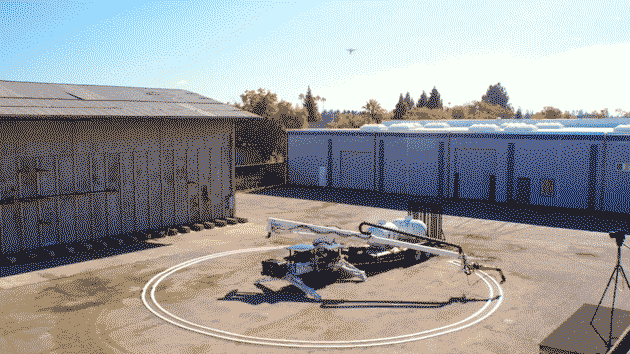MIT building 3D printer prints building in 14 hours

In Massachusetts technology created a self-propelled 3D-printer to print buildings.
The Techcrunch article is translated for you Top 3D Shop .
At first glance, the “digital construction platform” is as clumsy as its name. The nozzle is attached to a pair of robotic "hands" mounted on a structure such as a huge radio-controlled SUV with tracked ribbons. Yes, even the side trailer behind - with two large strapped metal tanks. In fact, this whole bulky system is a mobile 3D printer.
MIT is sure that this development can revolutionize construction , both on Earth and, in the distant future, on other planets.
')
The idea of 3D printing of buildings, of course, is not new. Attempts to erect buildings in this way were made before - with varying success. What distinguishes this project from the majority of competing ones is the shift in the production process: the transition from block construction to printing the entire structure in one pass.
The developed system is free from the typical limitations of traditional 3D printing solutions. This is achieved due to the presence in the device of a long robotic "hand" of industrial purpose. Already connected to it is another “hand” of increased accuracy, providing the necessary control in the process of work. This is exactly what gives the machine the ability to operate in much larger space than traditional 3D printers - their coverage is usually limited by the size of the platform (or “table” for printing).
The project team has been working on this robot since 2011, and the development process took place in several stages. The video published by the developers demonstrates how the robot produces a 3.5-meter-high dome of foam concrete, leaving room for pipes and cables in the walls.
The whole process of the construction of such a design from a 3D printer took about 14 hours. But what is shown in the video is only the beginning of the ambitious goals of the developers.
Project author Stephen Keating recently received his doctorate in mechanical engineering. He enthusiastically talked about how the ambitions of his team members in a matter of seconds transfer them from the laboratory at the Massachusetts Institute of Technology to the walls of buildings under construction on Mars.

Stephen Keating:
“Building machines and buildings, inspired by structures of natural origin, is a fashion trend in the world of modern robotics. The entire system is programmable and starts with one touch of a button. And if you need to perform the task in extreme conditions - in the Antarctic, or, what is there, on Mars - complete autonomy is ensured.
Our vision of the future in this project is self-sustaining robotic systems. As the tree is able to provide itself with energy, so our platform is designed with a reference to this possibility. We have demonstrated this by applying solar energy panels in the design. Further development of the idea is the ability to collect and use materials available on the ground. ”
With a well-chosen combination of sensors, the system can adapt to circumstances - light, weather conditions - and use available materials for construction. The documentation even has a proposal for the construction of walls of organic materials, cyanobacteria - they can adapt to the environment, and this is consistent with the original goal of the team to build "biological buildings".

Stephen Keating also stresses that he prefers to call the developed machine a platform rather than a 3D printer. The goal of his team was to create a robotic tandem system, the various functions of which will be used for construction - in addition to 3D printing, the machine can mill and dig.
And, although many of the goals on paper look like science fiction, Stephen confidently asserts that the system will be able to build buildings for real use in the near future.
“I believe in the next few years you will begin to notice around the building, which will be created in a similar way. This phenomenon will be widespread. ”

Do you think it is possible to use 3D printers in mass for building buildings in the next ten years? Will it be possible to order a seal, for example, a country house (similar to the one that Apis Cor has printed not so long ago in the Moscow region), and start using it in a couple of days? Share your thoughts on this topic in the comments.
Source: https://habr.com/ru/post/453978/
All Articles